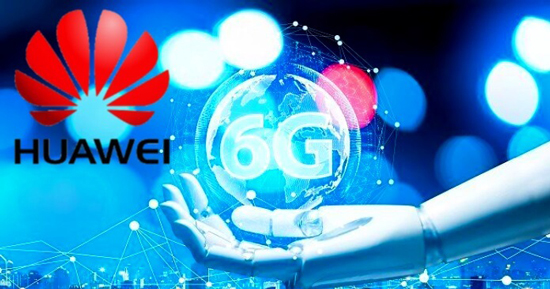6G is next – goodbye smartphone, hello brain
As Western powers continue to grapple with if or how to fit Huawei’s 5G networks into their societies, reports have revealed the Chinese telecom giant is already well into researching 6G mobile technology.

Key points:
• 6G is predicted to fundamentally alter people’s relationship to technology;
• Huawei is not the only company researching 6G, which is estimated to roll out in the 2030s;
• Huawei has been banned from 5G networks in Australia, New Zealand and the US.
6G, a term used for the globe’s “sixth-generation mobile” wireless internet network, will be the successor to the world’s still-forthcoming mobile network, 5G.
Presently, that network is slowly being rolled out in cities around the globe, and in Australia, access to the service has been slow, with coverage so far being provided by just Telstra and Optus.
However, recently tech website The Logic reported that Huawei was the latest company to join a small list of companies and universities commencing 6G’s research and development.
Huawei’s research will take place at the company’s Canadian lab, and Song Zhang, Huawei Canada’s vice-president of research strategy and partnerships, told Logic the company was “in talks with Canadian university researchers” about the network’s development.
Yang Chaobin, the president of Huawei’s 5G products, said that 6G would not be viable until 2030.
But as 5G technology is still in its infancy – and with many telecommunications company still determining how and where to implement 5G infrastructure – is the move to 6G research jumping too fast?
Top speeds:
• NBN – 100 megabits per second;
• 5G – 1,450 megabits per second (US test of peak speed);
• 6G – 8,000,000 megabits per second (predicted).
Before we get into 6G, it might be worth revisiting what 5G is.
5G has the potential to be 10 to 100 times faster than the 4G networks most smartphones currently use. That network has been running from 2009, which took over from 3G networks that launched in the early 2000s, and 2G networks that brought the world text messages for the first time in the 1990s.
Mahyar Shirvanimoghaddam, an expert in wireless communications at the University of Sydney, told the ABC that there were “three main focus areas” that separates 5G from 4G: speed, capacity and stability. “5G should have a very high data rate, it should never be interrupted, and the reliability of the service should be very high,” he said.
Tests with US mobile provider Verizon have recorded peak download speeds of 1.45 gigabits per second (more than 14 times the top speed of Australia’s NBN).
Technology website CNET reported that 5G’s lag time – the amount of time it takes between clicking a link and the network responding – could be reduced to the amount of time it takes for a flash to fire on a normal camera.
This emerging network is touted to increase the digitisation of everyday life — from smart home appliances, to self-driving vehicles or even medical hardware.
On a smartphone, 5G networks promise users the ability to download a season’s worth of television in a matter of seconds.
According to Dr. Shirvanimoghaddam, 5G adoption on smartphones will be where the bulk of the network is used, as that is where “providers and operators are going to make money”.
yogaesoteric
November 27, 2019
